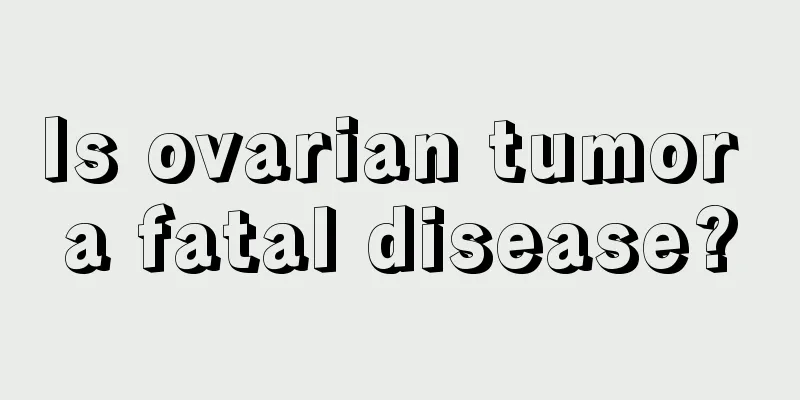Why do my legs swell after standing for a long time?

|
Sitting or standing for a long time will cause leg swelling. Leg swelling must be taken seriously because severe cases may cause varicose veins. Varicose veins will not only affect your image, but may also affect your physical health. There are many reasons for leg swelling. If you want treatment, you must go to the hospital to find out the cause and treat it under the guidance of a doctor. Remember not to take medication blindly, which will result in worsening of the condition. Who is prone to varicose veins? 1. Patients with deep vein thrombosis. Deep vein thrombosis blocks blood return from the deep veins, increases the burden on the superficial veins, and causes compensatory dilation of the superficial veins. 2. Pregnant women. During pregnancy, the uterus enlarges and compresses the iliac veins, causing increased pressure in the veins and varicose veins. At the same time, the blood flow in the pelvis increases during pregnancy, affecting blood return to the lower limbs, which is also a factor in the onset of the disease. 3. In patients with pelvic tumors, the tumors and enlarged lymph nodes in the pelvis compress the iliac veins, causing increased venous pressure in the lower limbs and making varicose veins more likely to occur. 4. Workers who often stand. Teachers, salespersons, etiquette ladies and other staff who need to stand for a long time, due to the effect of gravity, the blood pressure acts on the venous valves to a greater extent. Over time, the function of the venous valves is damaged, and the blood cannot return normally, causing the disease. 5. People with calf vein injuries. Due to injury to the superficial vein walls and venous valves, the elasticity of the vein walls and valve function may be affected after healing, resulting in varicose veins at the injured site. 6. The elderly and those with congenitally weak venous walls. The venous walls of the elderly begin to degenerate and the valve function also weakens. In those with congenitally weak venous walls, the veins lack elasticity and are easy to relax. When the intravenous pressure increases, the lumen expands, causing venous valve insufficiency, blood to flow backwards, and venous pressure to increase. As a result, the veins first expand and then extend and bend to become venous nodules. The dangers of varicose veins 1. Affects the beauty of the legs. In addition to affecting the appearance of the legs, varicose veins also cause patients to experience soreness, swelling, discomfort and pain in the early stages of the disease. In the later stages, the damaged veins bulge, expand and become tortuous, with the great saphenous vein in the calf being the most severe. 2. Venous damage. Patients with long-term varicose veins have weak venous walls and high venous pressure. In addition, insufficient local blood supply causes atrophy of muscle and fat tissue. Varicose veins protrude under the skin, and ulcers will occur even with slight injuries, and the venous walls are easily damaged. 3. Edema combined with eczema. Due to venous congestion, tissue edema worsens, leading to eczematous changes in the skin. 4. Ulcers. The skin is itchy and the patient will scratch it involuntarily, which will aggravate the eczematous changes and cause erosions and ulcers. Patients with a long course of illness often experience skin atrophy, desquamation, itching, pigmentation, nodules on the skin and subcutaneous tissue, and even eczema and ulcer formation, sometimes complicated by bleeding and thrombophlebitis. 5. Necrosis. This type of ulcer often occurs on the upper part of the medial malleolus and the lower 1/3 of the medial side of the calf. Due to insufficient blood supply to the tissues, the tissues around the ulcers become thinner, the skin becomes darker and harder, and the ulcers do not heal for a long time. It is easy to recur after recovery. 6. The above symptoms are most severe in women of childbearing age before menstruation. The more severe the varicose veins are, the more obvious the local pain in the lower limbs will be, and blood may even accumulate in the feet, causing the ankles to appear purple. In more serious cases, blood will not flow back easily, and pigmentation and eczema-like dermatitis will occur, and congestive ulcers may occur, and sometimes venous rupture and bleeding may occur. Some cases may cause blood clots and inflammation along the venous walls, a condition called thromboangiitis vasculitis. The epidermis may show redness, swelling, and pain along the veins, and even very painful nodules may be felt. 7. If a blood clot moves to the lungs with the blood flow, fatal pulmonary embolism may occur. Varicose veins, also known as old leg ulcers, are the abnormal dilation of veins. When it first occurs, you will feel local skin itching, leg swelling, soreness, fatigue, and the condition worsens with long periods of standing. Mild cases may cause the condition to resemble an earthworm, while severe cases may require amputation. Effective treatment for varicose veins Dispel cold and resolve blood stasis The invasion of cold evil is most likely to cause blood contraction and endogenous blood stasis. The intravenous Pingchong mixture has a rapid effect and strong penetration. When applied externally to the affected area, it can quickly reach the skin texture, dispel cold and dampness, resolve blood stasis and promote new growth. While repairing damaged skin, it also works on the internal body to eliminate the root cause of varicose veins. Unblock meridians Varicose veins are often caused by congenital deficiencies, weak tendons and veins, and further damage to the tendons and veins from walking or standing for long periods of time and excessive fatigue, which lead to meridian disharmony, poor circulation of Qi and blood, blood congestion below, and blood stasis blocking the expansion and filling of the veins, which eventually become entangled and twisted. Venous Pingchong mixture can penetrate deeply into the body, promote qi circulation and relax tendons, warm and moisten the meridians, and eliminate obstruction in the meridians, thereby achieving the effect of unblocking blood vessels and relieving arthritis and blood stasis. Regulate Qi and Blood Qi is the driving force of human body's vital activities. "Blood follows Qi and Qi is the commander of blood." If Qi is sufficient, vital activities are vigorous, blood production is abundant, and blood flows smoothly. On the contrary, if Qi is deficient, blood production is insufficient, blood circulation is unable to be promoted, and blood stagnates inside the body. Venous Pingchong Mixture is used to invigorate Qi and dredge the collaterals, so as to promote the vitality of Qi, stimulate blood circulation, and remove blood stasis without harming the body, thus achieving the purpose of restoring the body's vitality and unblocking the meridians. It is particularly effective for those with blood stasis, especially in the collaterals. |
<<: Why do my legs swell in the afternoon?
>>: What is the principle of human fever
Recommend
What should I do if a piece of my denture falls off
Dental problems are a common phenomenon in our li...
What's going on with the fibrosis lesions in the left lung
Fibrosis is the fibrotic lesion left over after l...
How to adjust diet after intestinal tumor surgery
Reasonable intake of fat, milk and dietary fiber ...
Does applying toothpaste work when there are blisters on the mouth
Blisters on the mouth are a common problem. Altho...
What to do if forehead is too high
I wonder if you have noticed in life that people ...
What vitamins are lacking when you always get angry
If you often get angry, it is recommended to deve...
What diseases cause arthritis
Arthritis is a relatively common disease. There a...
How to take a bath with milk
Bathing is a habit that has great benefits for yo...
What are the tips for teratoma care
What are the tips for teratoma care? Teratoma is ...
Dizziness after treatment of nasopharyngeal carcinoma
Dizziness after nasopharyngeal cancer treatment 1...
Fosfomycin calcium tablets
Fosfomycin calcium tablets are a very common medi...
TCM classification and treatment of ovarian cancer based on syndrome differentiation
TCM has different names for ovarian cancer. Accor...
The harm of bladder cancer to patients
Bladder cancer, which is common in middle-aged an...
How to install air conditioner
Air conditioning is a frequently used regulating ...
What should I do if my stomach hurts after walking after a meal?
Some friends like to go for a walk after a meal, ...









